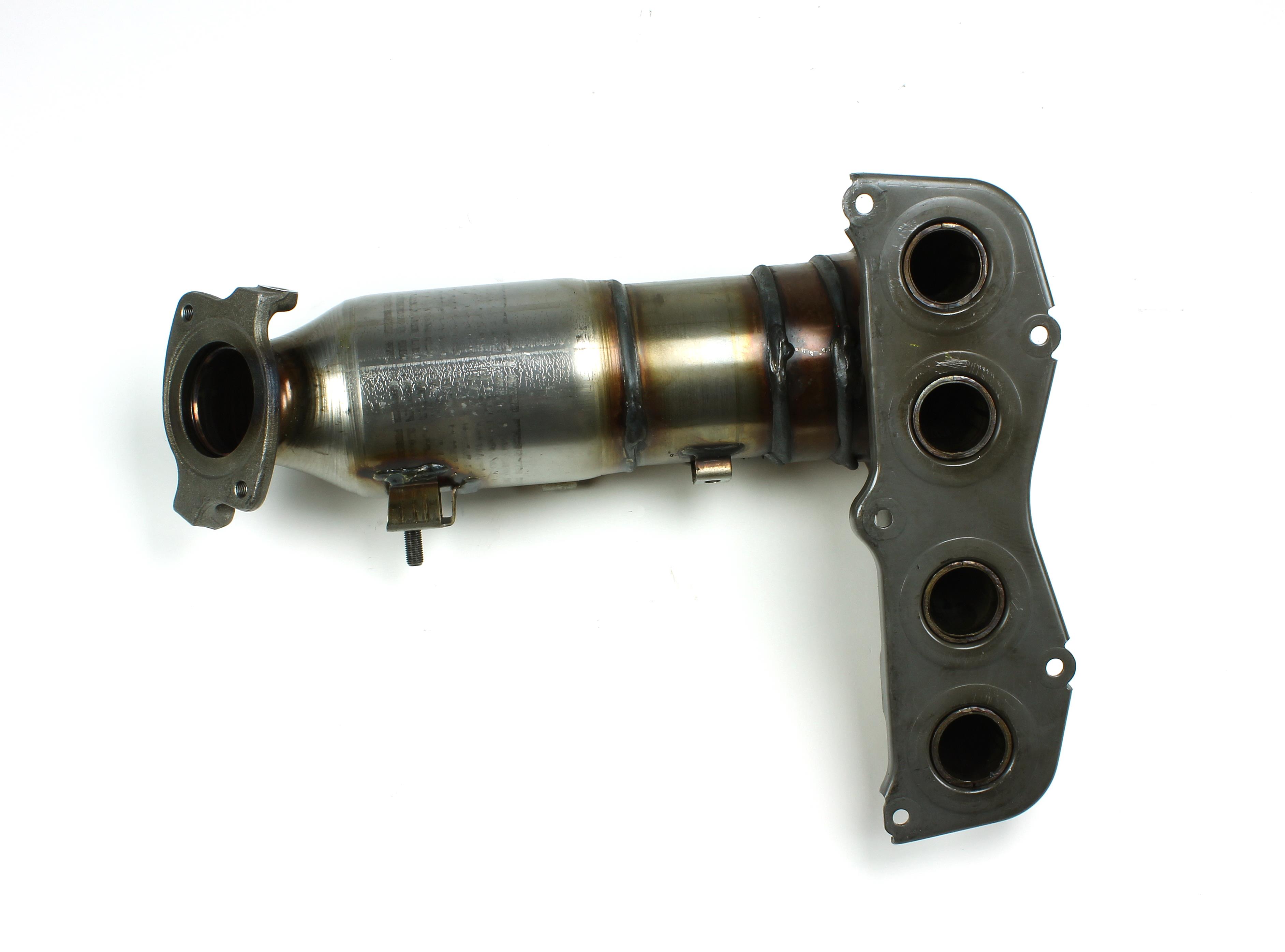2005 Toyota Camry 2.4 Catalytic Converter

The 2005 Toyota Camry, particularly the 2.4-liter (2AZ-FE) variant, enjoys a well-deserved reputation for reliability and longevity. A critical component in achieving those qualities, while simultaneously meeting emissions standards, is the catalytic converter. This article dives deep into the specifics of the 2005 Camry 2.4's catalytic converter, covering its function, common issues, replacement considerations, and contributing factors to its lifespan.
Function and Design
The catalytic converter, sometimes called a "cat," is a crucial part of the exhaust system. Its primary function is to reduce harmful emissions, such as hydrocarbons (HC), carbon monoxide (CO), and nitrogen oxides (NOx), into less harmful substances like water (H2O), carbon dioxide (CO2), and nitrogen (N2). The 2005 Camry 2.4 utilizes a three-way catalytic converter. This means it simultaneously addresses all three of the aforementioned pollutants. Inside the converter, a ceramic honeycomb structure is coated with precious metals – typically platinum, palladium, and rhodium. These metals act as catalysts, accelerating the chemical reactions that neutralize the pollutants. The 2AZ-FE engine is known for its relatively clean burning characteristics, however, the catalytic converter is still essential to meeting stringent emissions regulations.
Common Problems and Symptoms
Several factors can lead to catalytic converter failure on a 2005 Camry 2.4. One of the most common culprits is contamination. Engine oil leaks, particularly from valve cover gaskets or piston rings, can introduce oil into the exhaust stream. This oil coats the catalyst, rendering it ineffective. Similarly, coolant leaks into the combustion chamber, often caused by a failing head gasket, can also contaminate the converter. Excessively rich fuel mixtures, often stemming from faulty oxygen sensors or fuel injectors, can overheat the converter and cause it to melt or crumble internally.
Symptoms of a failing catalytic converter include:
- Check Engine Light: The most obvious sign, often accompanied by diagnostic trouble codes (DTCs) such as P0420 ("Catalyst System Efficiency Below Threshold, Bank 1").
- Reduced Engine Performance: A clogged converter restricts exhaust flow, leading to a noticeable decrease in power and acceleration.
- Poor Fuel Economy: The engine may work harder to overcome the exhaust restriction, resulting in lower MPG.
- Rattling Noise: Internal damage to the converter, such as a broken honeycomb, can produce a rattling sound from underneath the car.
- Failed Emissions Test: A failing converter will almost certainly result in a failed emissions test.
- Sulfur Smell: A "rotten egg" smell, indicative of hydrogen sulfide (H2S) being produced due to incomplete conversion.
Replacement Considerations
Replacing a catalytic converter on a 2005 Camry 2.4 can be a significant expense. Original Equipment Manufacturer (OEM) converters are the most reliable but also the most expensive. Aftermarket converters are a more budget-friendly option, but quality can vary considerably. Look for converters that meet EPA standards and are CARB (California Air Resources Board) compliant if you live in California or a state that follows California emissions regulations. When choosing an aftermarket converter, researching reputable brands is essential.
Before replacing the converter, it's crucial to diagnose the underlying cause of the failure. Simply replacing the converter without addressing the root problem (e.g., oil leak, faulty oxygen sensor) will likely lead to premature failure of the new converter as well. Consider replacing the oxygen sensors at the same time as the catalytic converter. Aged or faulty O2 sensors can contribute to converter failure and replacing them concurrently saves on labor costs in the long run. The 2005 Camry 2.4 typically uses two oxygen sensors: one upstream (before) and one downstream (after) the catalytic converter.
Lifespan and Maintenance
With proper maintenance and operating conditions, a catalytic converter on a 2005 Camry 2.4 can last for 100,000 miles or more. Regular oil changes, addressing engine leaks promptly, and using high-quality fuel can all contribute to a longer converter lifespan. Avoid short trips where the engine and exhaust system don't fully warm up, as this can lead to carbon buildup in the converter. Regularly checking and replacing spark plugs and ensuring proper engine tuning also helps prevent excessive strain on the catalytic converter.
In summary, the catalytic converter is a vital component of the 2005 Toyota Camry 2.4's emissions control system. Understanding its function, potential problems, and preventative maintenance measures can help ensure its longevity and maintain the Camry's reputation for reliability and environmental responsibility. Remember, proper diagnosis of the root cause of a converter failure is paramount before undertaking a replacement.
